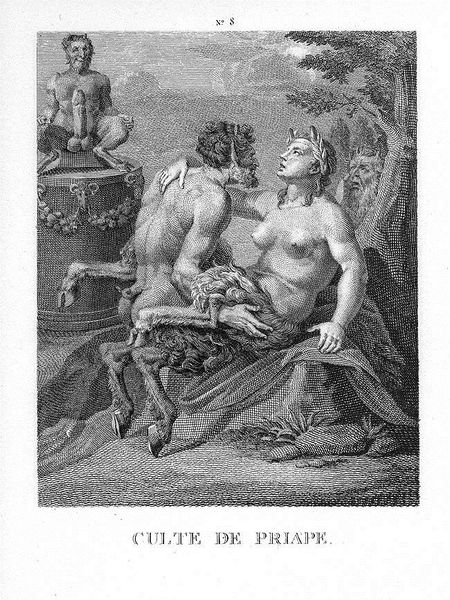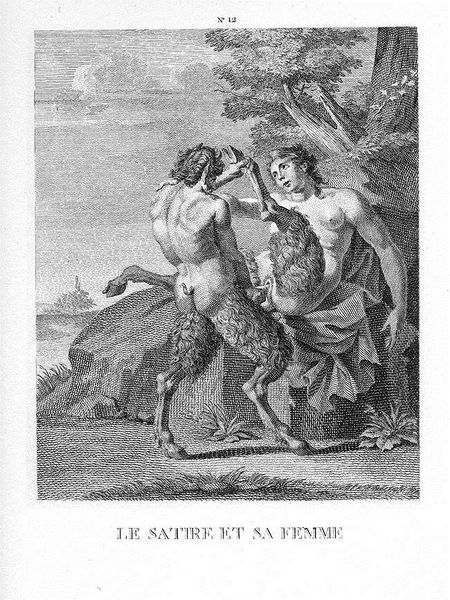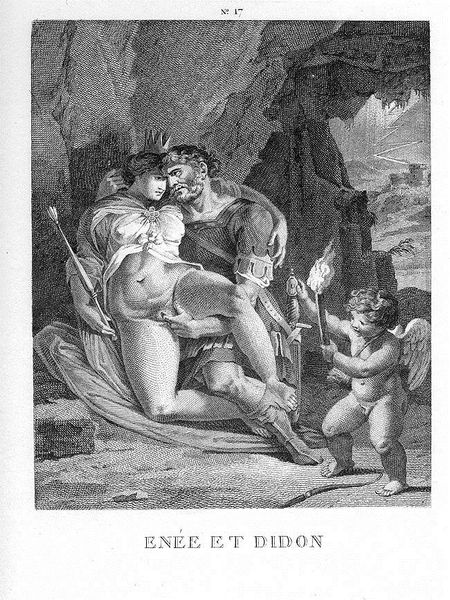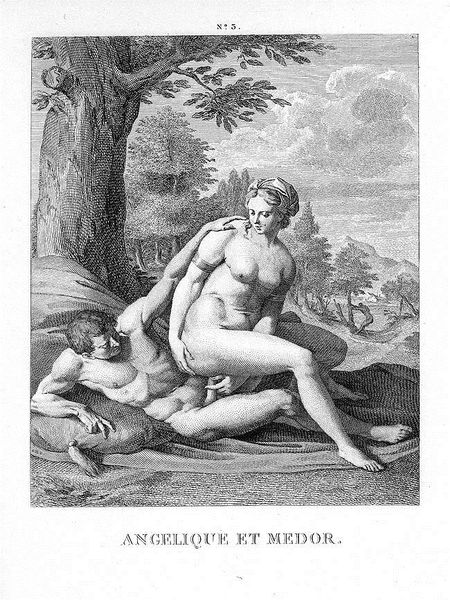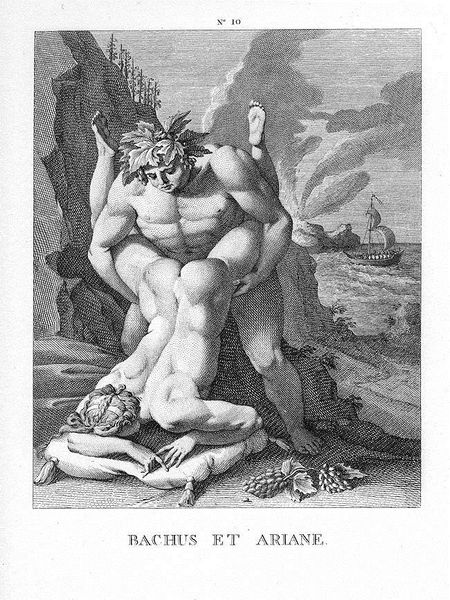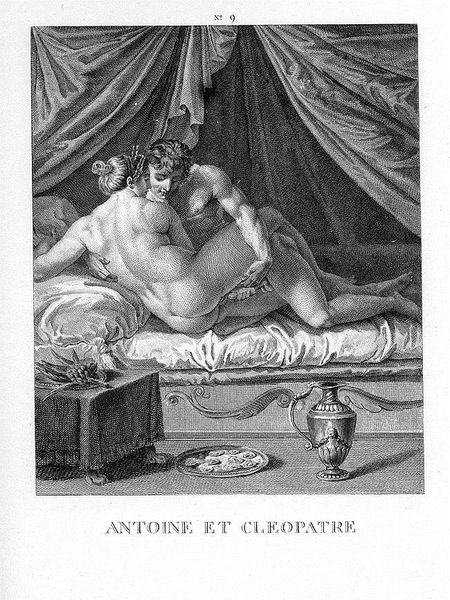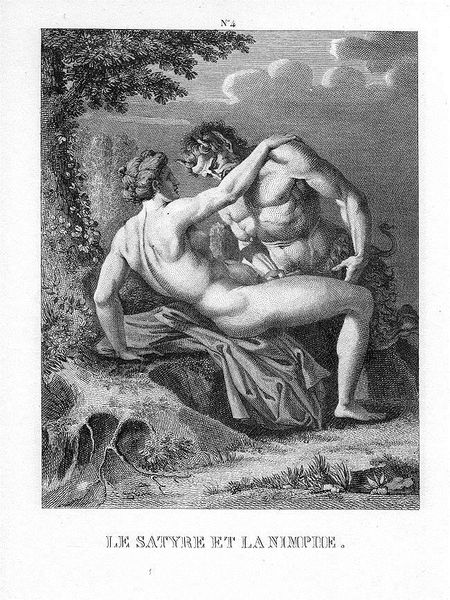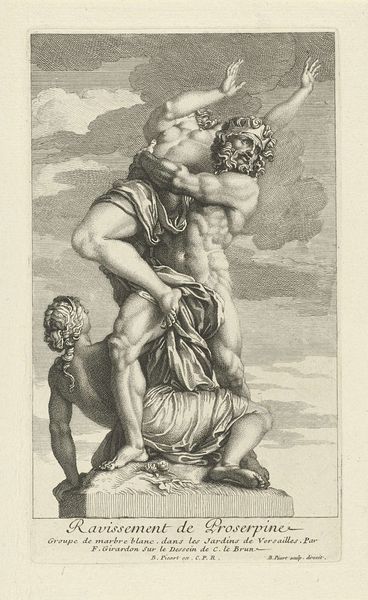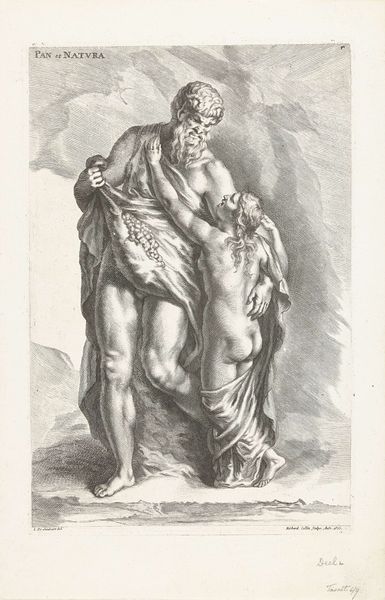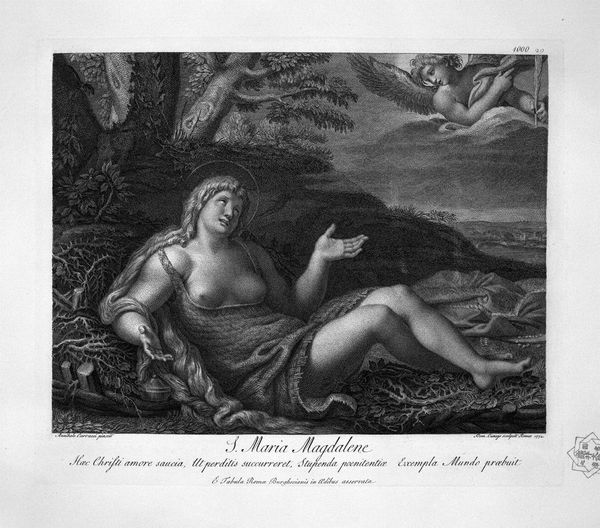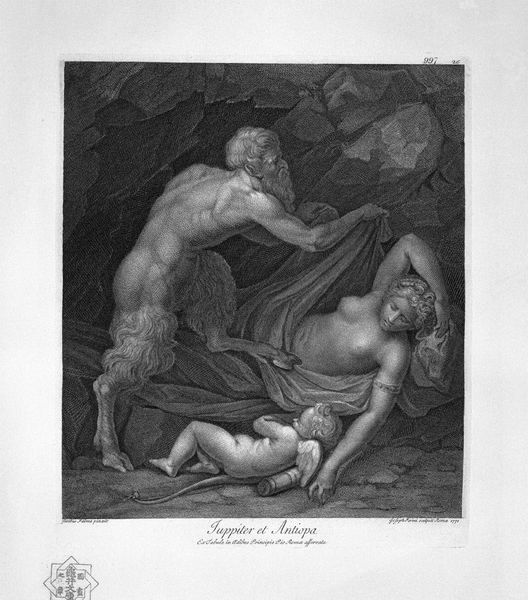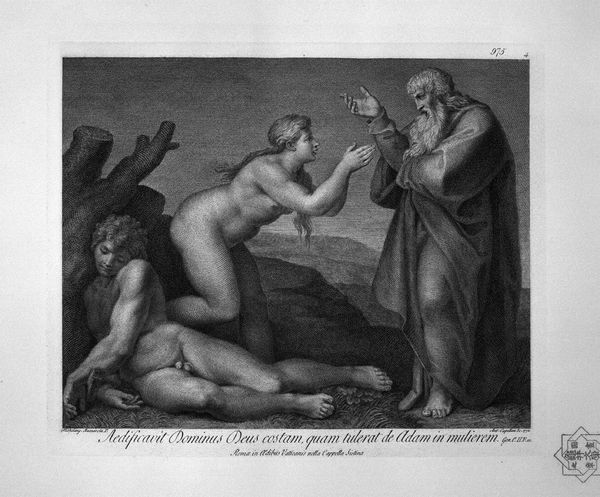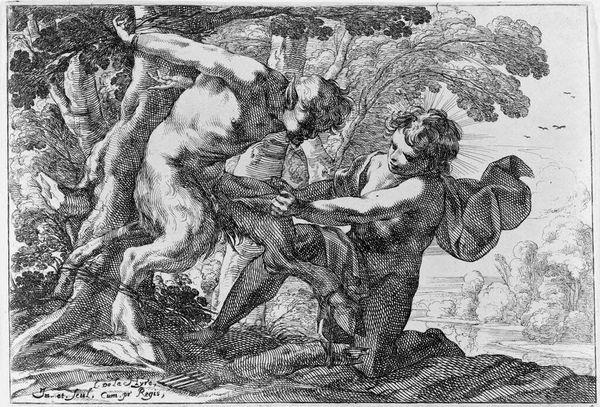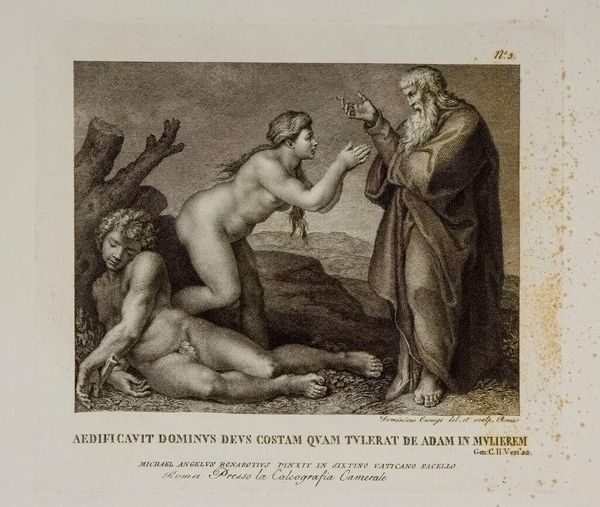
engraving
#
portrait
#
baroque
#
classical-realism
#
figuration
#
female-nude
#
roman-mythology
#
black and white
#
mythology
#
line
#
history-painting
#
nude
#
engraving
#
male-nude
Copyright: Public domain
Agostino Carracci made this print of Hercules and Deianira sometime around 1600, and it gives us a glimpse into how classical myths were being re-imagined in the late Renaissance. Carracci was part of an artistic dynasty in Bologna that sought to revive classical ideals in painting and printmaking. Here, Hercules is portrayed as a muscular figure, effortlessly carrying Deianira, his prize. The image is packed with classical references, a visual language that would have been instantly recognizable to educated viewers. But what's interesting is how Carracci and his circle used these classical forms to comment on the social structures of their own time. Bologna was then a prosperous city, eager to display its cultural sophistication through the arts. Prints like these circulated among collectors, reinforcing their status as learned patrons of the arts. By studying the artistic milieu of Bologna and the networks of collectors and artists, we can better understand the social function of art in this period. The meaning of art is always contingent on its social and institutional context.
Comments
No comments
Be the first to comment and join the conversation on the ultimate creative platform.
